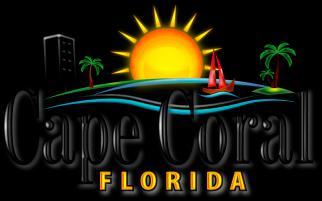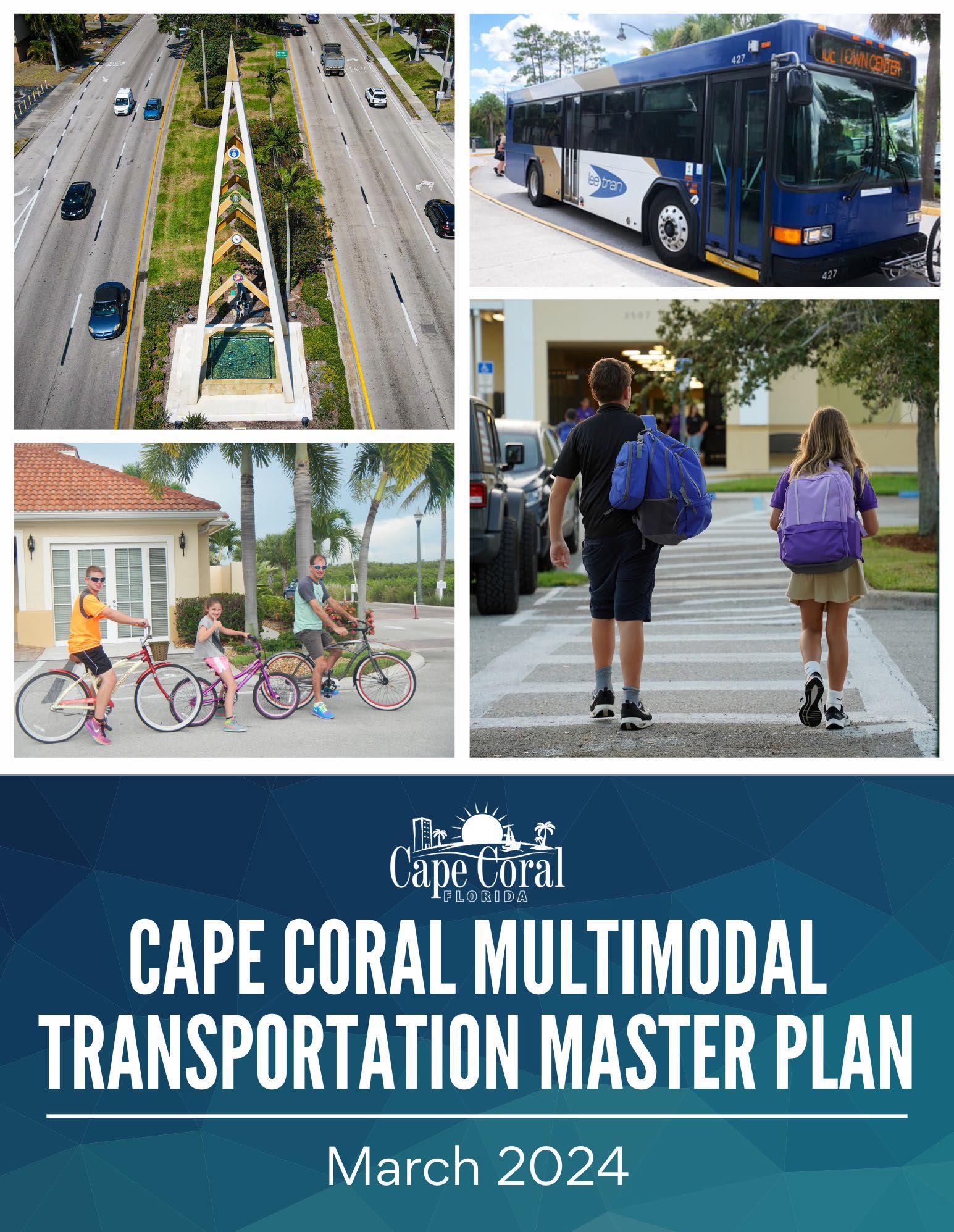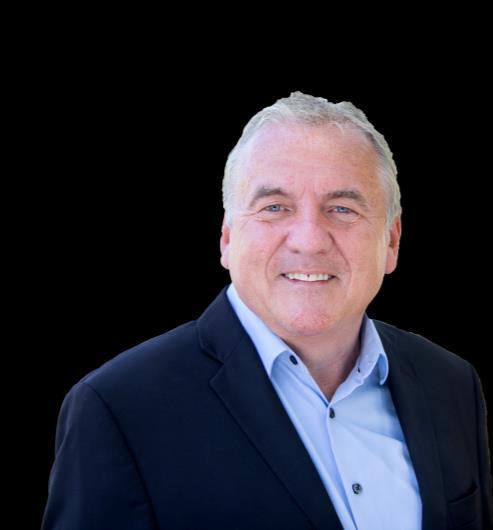


September 5,








September 5,






Sara
Ned Baier, AICP is the Project Manager with 35+ years of experience in local government and consulting


Rob




Laura Dodd, AICP is the Principal Transportation Planner for the City of Cape Coral with 10+ years of experience in local government mobility planning.







400 Miles of Canals
More than Anywhere Else in the World — Even Venice!

120 Square Miles
3rd Largest City in Florida (Area)
225,000 Residents
7th Largest City in Florida
400,000 Residents
By Build-Out Year; One of the Fastest Growing Cities in Florida




Multimodal Planning recognizes Mobility is more than the through movement and dependence on automobiles.
Significant departure from the auto-centric planning paradigm of the 1950s upon which Cape Coral was originally built.









Educate. Change the mindset of users and decision-makers by articulating and implementing a steady program of interventions to demonstrate the benefits of a more balanced system approach.
Tailored: Design and implement rational programs, policies, and projects that align with the community’s vision. This includes addressing short-, mid-, and long-term goals, leveraging political capital, and securing identifiable funding sources.
Innovative: Leverage multiple strategic initiatives to introduce or revise programs and projects. Collaborate with other agencies when feasible and apply best practices and peer reviews to ensure precedent.
Incremental: Progressively advance towards the long-term vision by establishing a series of positive feedback loops that reinforce and build upon previous achievements.
Reinforce, Revise, & Adapt: Capture and document inputs, outputs, outcomes, and impacts comprehensively. Regularly update policies to sustain the framework for ongoing improvements. Ensure that plans retain sufficient flexibility to accommodate alternative approaches, when necessary, all while preserving the overarching vision.




Multimodal refers to different types of transportation modes such as biking, walking, public transit, water ferry, and micromobility.
A common misconception is multimodal plans don’t address automobile use or related issues.



The Multimodal Plan provides the strategic vision & recommendations needed for developing a more complete transportation network - including roadway capacity



The Multimodal Plan targets efficiency, equity, safety, and sustainability for Cape Coral’s transportation network.




• City Goals
• Existing and Future Conditions
• Needs Analysis and Opportunities
• Projects, Policies, and Programs
• Priorities and Emerging Trends
• Public and Stakeholder Engagement
• Implementation Plan




• Eliminate fatalities and injuries for all modes of travel using available tools, technology, and knowledge.
• Create a well-connected transportation network that provides multiple routes and serves future citywide growth.
• Provide all individuals, regardless of their socio-economic status, race, gender, age, or other characteristics, access to transportation resources and opportunities.






Priority corridors and intersections were selected based on the evaluation criteria: equity, schools, safety, and connectivity.
• Del Prado Blvd
• Pine Island Rd
• Cape Coral Pkwy
• Santa Barbara Blvd
• Burnt Store Rd
• Palm Tree – Wildwood – Palm Tree Blvd





• Between 2018 to 2022 in Cape Coral
• $129,334,089 in vehicle damages
• 517 serious injuries
• 66 fatalities
• 2 pedestrian accidents on Dec. 23, 2023
• Pine Island and Burnt Store Road
• Cape Coral Parkway and Santa Barbara Boulevard







• Equity
• Projects located within a disadvantaged community
• Schools
• Bicycle and pedestrian projects located within 1-mile from a school
• Safety
• Corridors with more crashes are higher priority
• Connectivity
• Projects connecting to existing facilities
• Projects can provide safe alternative modes to reduce congestion


• Transportation planning often leads to higher speeds, as a byproduct of congestion reduction…
• Conversely, a desired outcome from the Cape Coral Plan was slower speeds.
• Transportation impacts were modeled through “hard coding” of link speeds on affected roadway segments.

• Model simulation of reduced speeds on select corridors equated to lower citywide vehicle-miles traveled (-175k) and vehicle-hours traveled (-82).




• Other travel demand modeling activities included:
• Deeper dive into anticipated growth within the City (+57% VMT, 2015 to 2045)
• Simulated trip reduction numbers for demand responsive transit within proposed Mobility Hub (-1k daily trips).
• Refuted need for six-laning four-lane corridor



• Weighed pros and cons of six-laning another corridor (volume reduction vs. congestion levels)











• From Wildwood Parkway to Palm Tree Boulevard
• Buffered Bike Lane
• Road Diet
of Cape Coral



• Installation of shared lane markings for biking
• Along roadways including:
• SE 47th Ter
• SE 15th Place
• Total length: 4.1 miles




Micromobility refers to small, lightweight transportation modes that can be used to travel shorter distances that average about three miles per trip.
• Best practices
• Pilot program
• Franchise area
• Geofencing
• No Riding Zones
• Exclusion Areas
• Vehicle type restrictions
• Parking areas/corrals

Bike Share Program


E-scooter Share Program


• A door-to-door service available for people to schedule using a mobile app or phone call utilizing smaller vehicles carrying three to ten passengers.
• Offers affordable fares plus flexible, prescheduled service.
• Provides door-to-door service to your destination.
• Fills transit service gaps.
• Connects you to transit routes that travel outside of the MoD zone. Implementation
• Partnership with LeeTran or private operator
• Funding
• FDOT’s 50/50 Service Development grant
• City Funds




Pedestrian Network Improvements
• 38 proposed sidewalk projects connecting routes to schools
• Qualify for Safe Routes to School Funding
• Located within 1 mile of a school
• Along a major roadway
• Total length: 75.2 miles




• A roundabout is an intersection where drivers travel around a circular island. Roundabouts improve traffic flow, reduce speeds, and enhance safety.
• Diplomat Parkway and Nelson Road
• Beach Parkway and Agualinda Blvd
• Palm Tree Blvd and SE 47th Terr
• Pelican Blvd and El Dorado Pkwy
• Country Club Blvd and Wildwood Pkwy
• El Dorado Pkwy and Skyline Blvd
• El Dorado Pkwy and Chiquita Blvd
• El Dorado Pkwy and Agualinda Blvd
• El Dorado Pkwy and Sands Blvd
• Santa Barbara and SE 27th St

Source: Federal Highway Administration




• Long term transportation improvement to bolster tourism and economic development
• 4 alternative ferry stops proposed
• Jaycee Park to Fort Myers
• Bernice Braden Park to Fort Myers
• Cape Coral Yacht Club to Fort Myers
• The Westin Cape Coral Resort at Marina Village to Fort Myers
• Recommend a future feasibility study and operating plan

Visit St. Pete




Why an Areawide Local Speed Limit Reduction Program?
• To target and address vulnerable users sharing roadways without dedicated facilities
Recommendation
• Conduct a Local Roadway Speed Limit Analysis Study
• Create an Areawide Local Speed Limit Reduction Policy to allow reduced speed limits in certain areas of Cape Coral
• Implement a Speed Limit Reduction Program





• Imposed on new development to fund transportation improvements.
• Replaces transportation concurrency and road impact fees.
• Flexible funding source that is a mechanism to fund this plan.
• Create a mobility plan
• Adopt and implement a mobility fee to fund projects identified in this Master Plan




